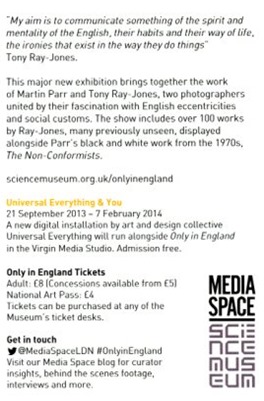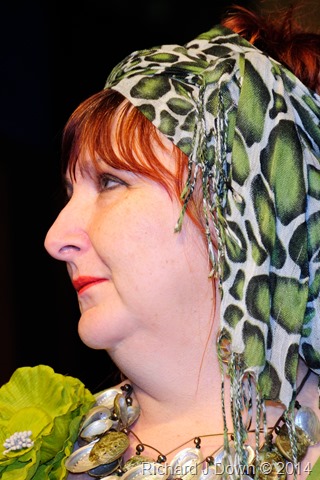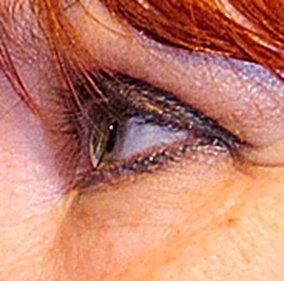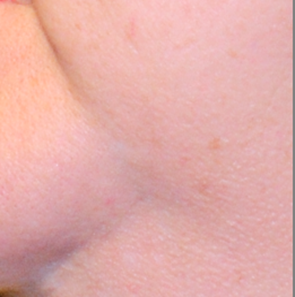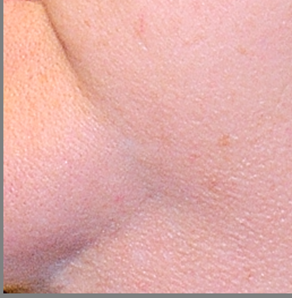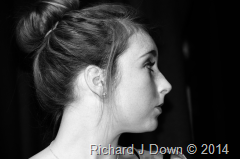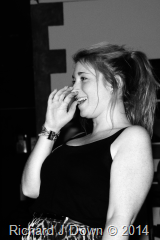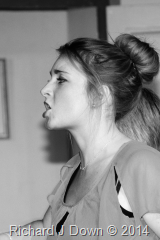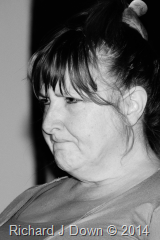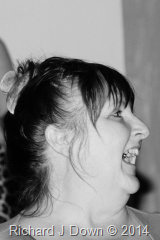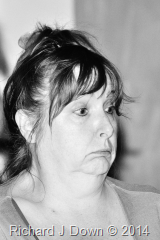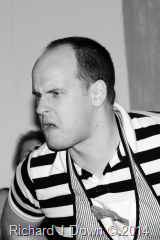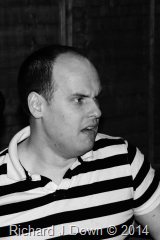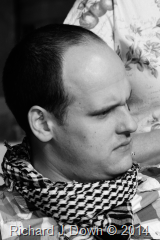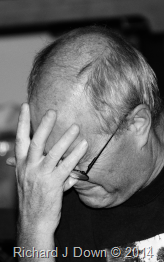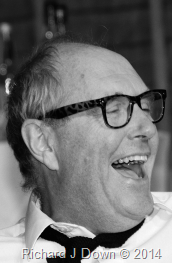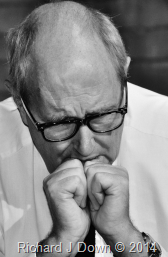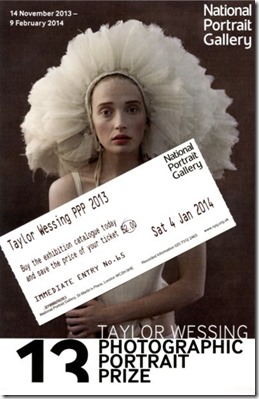This one of the course books for level one. I have now finished it after two attempts. Although informative and a good overview of the work of a number of contemporary photographers, I did struggle with some of the ideas discussed and some of the language used to express them. Even at the beginning of the fourth year of my studies, I still feel like an outsider, looking in on a world that I don’t understand and frankly leaves me bewildered most of the time. With the work of over 200 artists and only a brief description of just one or two of their images, (reproduced at small scale) I don’t expect to do more than be able to appreciate the diversity of current practice. Susan Bright’s Art Photography Now (see link below) has done a much better job with a smaller number of artists and a more comprehensive view of their work.
The book divides current art photography into eight broad sections. From each section I have briefly summarised the theme and chosen an image to which I can relate.
Ch. 1 If This Is Art: Dealing with subjects/scenarios which the artist/photographer has directed or deliberately planned.
pp. 20, 46 Philip-Lorca de Corcia
“Head” series resonated with me.
http://www.moma.org/learn/moma_learning/philip-lorca-dicorcia-head-10-2002 (
I enjoy street photography and have an ongoing project which I call “shooting from the navel” [refers to the camera position] in which my subjects are not aware of having their photograph taken) de Corcia has taken the genre to a new level by using lighting and a long lens to photograph his subjects candidly and selectively. My project is more random with a wide angle lens and a scattergun approach which involves a fair amount of editing. See also my post in reference to Beat Streuli:
http://rjdown-dpp-log.blogspot.co.uk/2013/10/reading-art-photography-now-susan-bright.html
Ch.2 Once Upon a Time: Story telling using a single image either by reference to fable myth or legend with which we are all familiar or by a set up that asks us to look carefully and interpret the image using our own knowledge, experience and intuition.
pp. 78-79 Hannah Collins
“In the course of time 6” (Factory Krakow).1996
http://www.hannahcollins.net/projects/archive/in-the-course-of-time.html This was exhibited as a massive print (2mx5m) shows a familiar (to me anyway) corner of what could be any workshop tucked away in backstreet factories of post industrial Europe of the 1980-90s. At first I thought it was abandoned but the forge has a fire alight (it’s right on the junction of the two page spread) so it is a working space. Where are the workers? Is there a strike meeting or just a tea break? When they return, what happens here, what is made or repaired? The drum in the corner bears the Polish word for Oil. There is a sense of anticipation and also desolation. The broken window panes, the clothes lockers with their doors hanging open. There is a sense of the past and perhaps the end of something.
Ch.3 Deadpan: Cotton claims that the deadpan aesthetic is the predominant style of photography created for galleries in the past decade. As I understand the term it is photography showing no emotional or personal involvement of the photographer but has a sense of the beautiful with clarity, detail and often reproduced at a large scale.
p. 87 Ed Burtynsky
Oil fields #13, Taft California 2002. I have chosen this as an example because it is one I have seen on a gallery wall at an OCA study visit in 2012 and experienced its scale and detail.
http://rjdown-taop-log.blogspot.co.uk/2012/05/oca-study-visit-260512-burtynskys-oil.html Included in this post is some discussion about the merging of documentary and art photography and possible conflicts that arise. If this is the deadpan aesthetic then the photographer is presenting his subject matter in an objective way. He is leaving it up to the viewer to interpret the truth of the image and raise questions about what is depicted.
Ch.4 Something and Nothing: Everyday objects photographed in an interesting or unusual way which brings them to our attention. This is a genre which interests me. The final project that I have in mind for this course will be a series of images taken from unusual viewpoints with a macro lens to emphasize objects and surfaces we touch daily but may not register or recognise.
p. 117 Gabriel
Orozco Breath on Piano 1993
http://www.telegraph.co.uk/culture/art/art-news/8231429/Gabriel-Orozcos-art-in-pictures.html?image=3 This picture caught my attention because of its simplicity. I recently caught an exhibition of UCA BA students work in Farnham entitled “
What we leave behind” .
https://www.facebook.com/wwlb.exhibition I have thought about how time robs us of immortality. If we are lucky enough to have a headstone, several generations of our family remember us. If we achieve fame or notoriety, history may record our passing, otherwise our existence dies with the last person who knew us. For me this image represents the briefest and most transient trace of our passing….one breath.
Ch. 5 Intimate Life: This is the aspect of contemporary art photography that I have the most difficulty with. In her introduction to this chapter, Cotton writes three pages on Nan Goldin. I’ve read through it twice at least. She had a hard life it seems and if this is her way of dealing with it and expressing herself, that's fine. I find it difficult to be interested in it beyond it being a single aspect of a diverse range of self expression currently practiced. Maybe it’s a cultural thing, I tend to find the American capacity for self analysis and angst tedious. One artist’s work that I did find interesting was Richard Billingham’s Ray’s a Laugh:
p. 150 Untitled. More of this series can be seen here:
It was Billingham’s motivation for taking these photographs that interested me. Cotton talks a lot about the way artists using this genre make use of the vernacular style of the family snapshot, the harsh flash lighting and the imperfection of the machine print. Billingham was to use these images as studies for paintings of his family life. In that way they are unselfconscious and not at all pretentious. Individually the photographs could be dismissed but as a series they show an intimacy that could only come from an insider.
Ch. 6 Moments in History: The introduction to this chapter asks a question. How do art photographers respond to the decline of documentary and reportage photography, its replacement by TV and digital media and maintain its social relevance? It seems that the approach is different to traditional methods with artists staying out of the action (reported by the mainstream digital media in all its forms) and using a reflective and contemplative approach on the long term effects of the event. Using medium and large format equipment ensures that the physical qualities of the resulting images can be fully exploited in the gallery.
From the examples shown in this chapter it is not surprising that I was immediately attracted to the work of Allan Sekula
p. 180 Conclusion of Search for the Disabled and Drifting Sailboat ‘Happy Ending’ 1993-2000 from his series Fish Story. The three images document the sighting and rescue of the crew. I was fortunate enough to find a .pdf of the book on-line. Although I have only skimmed through it, the images and texts promise an interesting exploration of the ports, people, politics and the current state of global trade by sea.
Ch. 7 Revived and Remade: I can’t pretend to claim that I understood much of the introduction to this chapter but I may be able to summarise: Modernist photography was elitist and in the post-modern era you can do what you like. I’m sure one day all this will become clear but I’ll need help, time and a lot more discussion with my fellow students before it sinks in.
p. 196 Self Portrait as my Father Brian Wearing 2003 Gillian Wearing – Again, I have chosen this image as I have seen the entire Album series on another gallery visit. Here is the relevant part of the post I made at the time:
Album (the family likenesses) I didn’t know how I felt about this at the time and nearly a week later I’m still uncertain. I can understand the idea that you may wish to draw attention to family likenesses and that to wear a mask and body suit of a relative to show an intimate connection reinforces this. What I do admire is the execution of the idea, a very complex and time consuming process which produced something of interest. As a technical process, very challenging. Is that its own reward perhaps? This work tells us something about Gillian Wearing but I’m not sure what.
Eighteen months later, my thoughts on the work have not changed.
Ch. 8 Physical and Material: The final chapter of the book is about those artists for whom making choices about the execution of their work is more important than adhering to standard acceptable methods. Experimentation with the methods and materials involved has become part of the creative process, whether this is the appropriation and inclusion of existing works into their projects, including photographs in installations or sculpture or simply returning to analogue camera and film technologies.
p. 231
TV Wheelbarrow from the series Analogue 2001-6 Zoe Leonard.
https://vimeo.com/68165540
This link shows Zoe Leonard talking about this project which took years to complete in cities around the world using a second hand Rollieflex camera recording urban landscapes to record the streets before they are changed and lost forever. Using a film camera reinforces the sense of change, using and recording something before it is gone forever. I can relate to this idea as projects that I have in mind for future assignments will include recording changes in the urban and rural environment.
Reflection: Although I found this book hard work, the photograph as contemporary art is now more relevant and I have come a step closer to considering and authoring my work in with this in mind. There was a least one artist in each chapter whose work I enjoyed reading about and was motivated to do more research on. Other work left me bewildered and did not engage my attention at all. Time will tell.........

